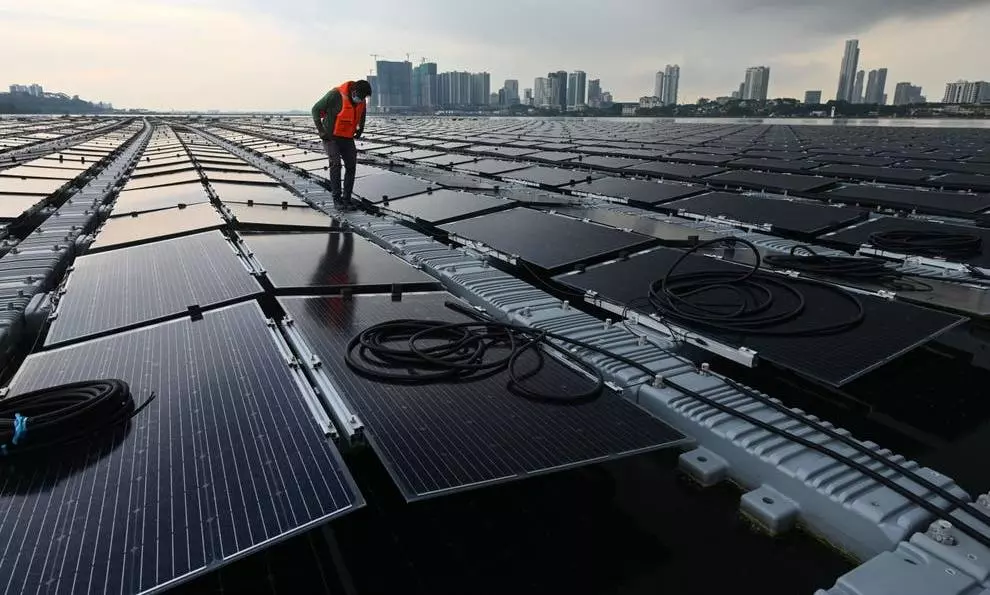
Singapore builds floating solar farm at sea to tackle climate crisis
text_fieldsSource: AFP
Singapore has built solar panels off the country's northern coast and on reservoirs in an attempt to tackle climate change.
The 13,000 panels are anchored to the seabed and can produce five megawatts of electricity, enough to power 1,400 flats for an entire year. The solar panels, which are imported from China, the world's largest manufacturer of the technology, are anchored to the reservoir floor with blocks of concrete.
Being one of the world's smallest countries, Singapore is facing a lack of space issues on its dry land and several logistical challenges in its effort to push towards producing renewable energy.
"The sea is a new frontier for solar to be installed…after exhausting the rooftops and the available land, which is very scarce, the next big potential is actually our water area," said Jen Tan, senior vice-president and head of solar in Southeast Asia at Sembcorp Industries, a business working on another solar project for Singapore.
With limited space, no rivers for hydro-electricity and no strong winds for the generation of wind power, the country has received several accusations from environmental advocacy groups for failing to do enough to combat climate change.
Singapore is one of the biggest per capita carbon dioxide emitters in Asia. The pressure to cut emissions runs high as the country's very future is under threat due to rising sea levels.
Installation of solar panels in the sea is part of its effort to reduce emission but floating solar farms are not enough unless backed up with a greater official commitment to cut emissions and halve its 2030 peak greenhouse gas emissions by 2050 and achieve net-zero emissions.
"Singapore updated its 2030 target in March 2020, but the updated target is not an increase in climate action, contrary to the Paris Agreement requirement to scale it up," Climate Action Tracker (CAT) stated on its website.























